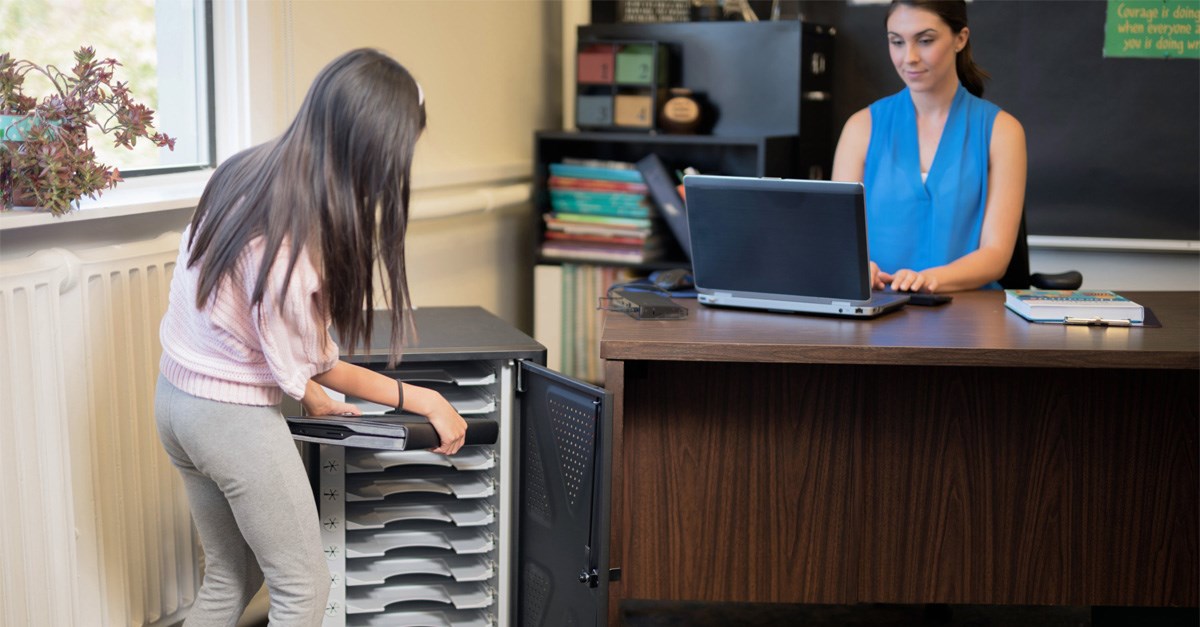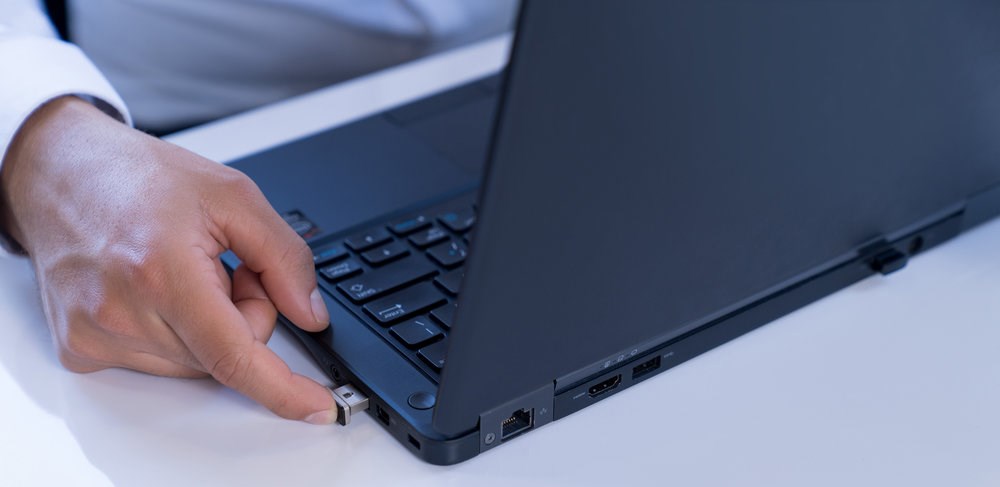
Your job is to protect your school, staff, and students, both digitally and physically, and that’s not easy in today’s internet-connected landscape.
Security in the K12 space is more complicated than ever, and schools are as high-value a cybercrime target as hospitals and governments. Districts are digitizing everything from whiteboards to homework, and although prints still comprise over half the instructional materials for 67% of districts, your printers are vulnerable too. Cloud-based networks, on-campus Wi-Fi, and physical school assets all require different types of security.
Thankfully, cybersecurity is evolving alongside schools, and there are plenty of new and trusted tools to keep you safe, from biometrics to secure storage of computer equipment.
Assessing K12 Data Protection Threats
Cybersecurity experts agree the weakest link in today’s school district’s security is the same as always—humans. Your staff and students, inadvertently or not, are always going to be the weakest link in district networks. It’s easier than you think to install malware on a device to access school records and wreak havoc on a system. At $250+, student records sell for over 25x the value of your Social Security Number.
Staff needs to be fully trained on how to recognize and proactively prevent common cyberattacks. Common threats include phishing scam, either by phone or email, to staff with a bad actor pretending to be from the district office asking for personal information that’s then used to access school data. An inside attack can come from leaving devices unsecured providing direct access to school records.
The Millennium Cohort Study found one in 20 teenagers have hacked a computer in their lives, and the school is a likely target, as it’s where they spend most of their day. It puts a strain on resources while compromising sensitive data. Students can install malicious code on USB drives to infiltrate your network from the inside, running ransomware, cryptocurrency miners, game and file-sharing servers, DDoS bots, and more.
Building a Secure K12 Environment
Staying on top of these cybersecurity threats takes a comprehensive IT strategy. There’s no quick fix, and anything connected to the internet is ultimately a target. Schools are an even bigger target because of the large pool of high-value data.
Here’s how to stay protected without demolishing your tight budget.
1. Secure Device Storage
No amount of cybersecurity or IT intervention can stop a device from being physically stolen. While the steps to come will protect school- and staff-owned devices from being breached by malicious software, you need physical security solutions for full, 360-degree protection.
Secure-storage charging cabinets, like the Kensington AC12, have racks to charge up to 12 devices at 90 watts each. Locking mobile devices behind this tamper-proof door provides convenience without sacrificing security. We also provide a variety of laptop locks for locking workstations in place while teachers are out of the classroom. Just by locking devices away in secure storage, you’ll notice a major increase in security. In addition, our K67913WW USB Port Blocker keeps unauthorized thumb drives from corrupting your network.
2. Authenticating Access
There’s no reason for any of your teachers or students to have administrative access to school devices. Permission-based access is crucial to locking your information down and keeping malicious software off. Biometrics are a key component of permission-based authentication in the K12 environment, providing tokenized, anti-spoofing capabilities to your network.

Advanced fingerprint technology securely stores fingerprint data for end-to-end (E2E) encryption in transmission. This enables FIDO log-in technology for staff and keeps students from accessing devices. There’s no reason you should worry about “crashing the mainframe” every time a teacher turns his back.
3. Real-Time Monitoring
Of course, no amount of K12 cybersecurity can replace the value of real-time monitoring. You never know when a security threat will happen, and the faster you respond, the less damage will be done. In the hacking world, the term “zero-day” is used to describe an active, unfixed cyberattack. The information is fresh, the access is current, and the threat is very real.
Real-time network monitoring ensures you see any unusual activity as soon as it happens and can respond to identify and remove it ASAP. By day one, the damage is already done, so you can’t afford to hesitate.
4. Shredding Paper Documents
Secure document storage is important, but proper disposal is even more so. A variety of paper shredding equipment throughout a school makes it easy for teachers and staff to destroy documents containing sensitive information that can’t be thrown in a regular wastebasket.

The M150-HS Office Assist Shredder provides a micro-cut shred on up to 10 sheets (including staples and paper clips) in a 6-gallon size that’s easy to conceal under a principal’s or administrator’s desk. M6000 ups the ante with a 21-gallon bin and patented auto-feed and lock that lets you walk away knowing documents will securely shred.
5. User Training
Training is vital to fix your network’s weakest security link – people. Best practices and repeatable, documented processes need to be in place district-wide to ensure every principal, teacher, and assistant is following a unified process. When cybersecurity threats emerge, communicating with the staff as soon as possible ensures nothing gets overlooked.
A teacher clicking a malicious link or accessing secure servers from unsecured devices can compromise data integrity. Dedicating time, money, and resources to continuous learning is the highest return on investment you’ll make this semester.
K12 Cybersecurity in the 2020s
Cybersecurity over the next decade is increasingly complicated, and staying safe will require vigilance and high-quality tools. We have the tools to keep your school district safe from all manners of data threats, both physical and digital.
Kensington understands the unique security needs of K12 schools versus businesses, government, hospitals and other organizations. Contact one of our education account managers to learn more about how we install solutions to secure your students’ future.